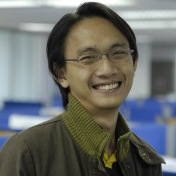
| 講演者 | Wong Chan-Yuan氏(マレーシア・マラヤ大学上級講師) |
|---|---|
| 日時 | 7月23日(木)17:00~19:00 |
| 場所 | 政策研究大学院大学 (部屋:講義室F) (東京都港区六本木7-22-1)(アクセス) |
| 主催 | 政策研究大学院大学科学技術イノベーション政策プログラム(GIST) |
| 言語 | 英語 |
| 参加費 | 無料(事前登録制) |
| 資料 | 発表資料(610K) |
The experiences of catch-up in the several economies of Asia-- leapfrogging in Korea, path-creating in Taiwan, and multi-mode with policy experimentation in Malaysia and China -- have generated and are generating a growing body of theoretical models to enrich the earlier theories developed for advanced countries. They show not only the diversity of catch-up strategies that can lead to a successful outcome but also show the evolution of strategies within a single economy as technological capabilities develop. There is, however, one constant running through these different strategies. That is the central role of the government, not only in setting strategic priorities but also in ensuring the necessary policy and institutional support is in place. The strategic models may provide policy lessons for other developing economies in Asia aspiring to follow the path of technology upgrading.
This seminar will provide an overview of catch-up industrialization strategies in East Asia over the past few decades, articulating a theoretical-conceptual change from Akamatsu's Flying Geese Model to a leapfrogging and path creating catching-up model. Within this intellectual context, we will discuss the economic, political and institutional conditions for effective implementation of catch-up strategies (management of state-created learning rents) in South Korea, Taiwan and Malaysia. We then propose a new analytical grid that summarizes the current research on China's catch-up industrialization, explicitly acknowledging China's arguably unique multi-pronged mixed-mode model.
 grips.ac.jp宛てにメールにてお申し込みください。
grips.ac.jp宛てにメールにてお申し込みください。